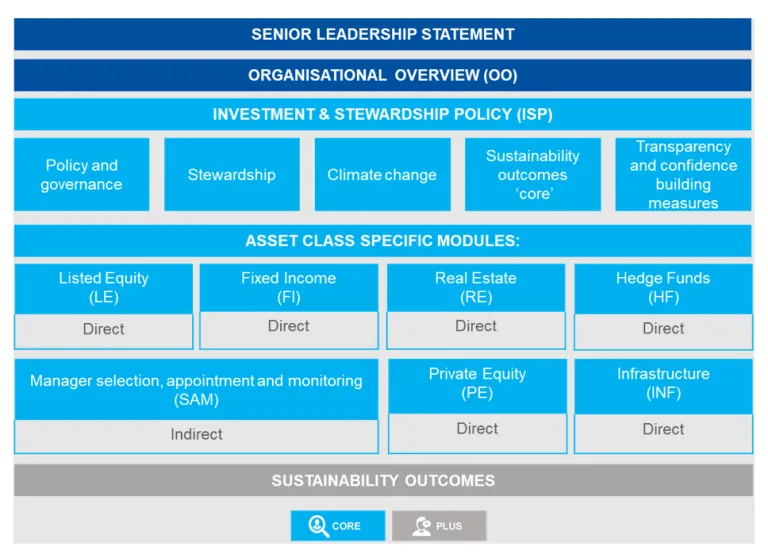5 Things to Know About PRI Reporting and Assessment
Welcome to our '5 Things to Know About' series. In the following, we answer a few of the most common questions that firms ask our ESG advisory team. Our first in the series is surrounding PRI Reporting and Assessments.
1. What are the Principles of Responsible Investment?
Originally founded in 2005 by the United Nations and a group of the world’s largest institutional investors, the Principles for Responsible Investment (PRI) is the world’s leading proponent of responsible investment. While it now operates as an independent non-profit organization, it continues its original mission of promoting “an economically efficient, sustainable global financial system” with currently more than 4,000 signatories across 85 countries.
At the heart of the organization’s work are the six Principles of Responsible Investment (the Principles), which are a set of voluntary and aspirational statements that signatories have committed to work towards. The Principles are:
- Principle 1: We will incorporate ESG issues into investment analysis and decision-making processes.
- Principle 2: We will be active owners and incorporate ESG issues into our ownership policies and practices.
- Principle 3: We will seek appropriate disclosure on ESG issues by the entities in which we invest.
- Principle 4: We will promote acceptance and implementation of the Principles within the investment industry.
- Principle 5: We will work together to enhance our effectiveness in implementing the Principles.
- Principle 6: We will each report on our activities and progress towards implementing the Principles.
2. Why Does the PRI Focus on Reporting?
As Principle 6 states, reporting is one of the explicit commitments that signatories make when signing the Principles. This reporting requirement is critical for PRI signatories because it creates:
- Accountability for the PRI and its signatories.
- A standardized transparency tool for signatories’ reporting.
- The opportunity for signatories to receive feedback which they can use to learn and develop.
The PRI regularly updates the Reporting Framework to ensure it reflects best practices and allows signatories to report on their various activities.
3. What Must Signatories Report On?
Annual reporting for signatories requires the completion of a questionnaire comprising an overview of the organization and mandatory and optional questions (referred to as “core” and “plus” indicators respectively). Quite often, ‘plus’ indicators follow on from ‘core’ indicators to allow signatories to give more context to their closed-ended responses.
The PRI’s annual reporting questionnaire currently contains the modules outlined in the diagram below.
The PRI’S ANNUAL REPORTING MODULES

Source: the PRI
The firm-level module Investment and Stewardship Policy (ISP) collects the key themes applicable to most asset classes and is divided into 5 sections:
- Policy & Governance.
- Stewardship.
- Climate Change.
- Sustainability Outcomes.
- Transparency and Confidence-Building measure.
PRI signatories need to complete additional modules based on the organization’s asset class(es), if they have 10% or more of their AUM invested directly in that asset class or if they have US$10bn or more of their AUM in any particular asset class.
4. When Are Signatories Required to Report?
PRI’s reporting is annual and covers the most recent 12-month period. The Online Reporting Tool is generally open from early January to the end of March. Signatories have a three-month window to submit their report and can start preparing the report in November, when the PRI releases PDFs of the reporting frameworks for that reporting period. The next reporting phase will start in 2023 and will refer to the practices and policies that investors had in place at the end of 2022.
The only exceptions to these reporting requirements are:
- New signatories who may opt out of reporting in the first reporting cycle, although the PRI encourages firms to complete the reporting to learn the process. Provisional signatories, those who are still in their fundraising process and not managing assets, are requested to report only on the Senior Leadership Statement, Organizational Overview (OO), and Investment and Stewardship Policy (ISP) modules.
The time required to complete an annual report will vary based on the organization’s size, its structure, asset mix (which impacts how many modules must be completed), and what information flow and data tracking systems are in place. After the first year, the Reporting Framework is automatically populated with the previous year’s answers, saving signatories time when information has not changed from the previous year.
Signatories that complete their annual reporting requirements have access to the public and private versions of their Transparency Reports via the PRI Data Portal. In addition, the public version of their Transparency Report (minus the confidential indicators) will also be accessible on the public signatory reports webpage.
5. How Does the PRI Assess Annual Reports?
Only core questions of the signatories’ annual reporting - which are closed ended questions, mandatory to report on and publish - are assessed. Scores are confidential, and provided per module or asset class, with no overall organization score given.
For every module completed by the signatories, PRI’s assessment scores the organization’s ESG practices and processes against industry peers and provides recommendations and resources to make necessary improvements.
In 2021, the PRI recalibrated its scoring methodology to make the assessment more challenging and consistent between modules and to reflect the current state of the responsible investment market. Module scoring moved to a new numerical grading system ranging from 1 to 5 stars. As part of the recalibration, questions are now weighted by their relative importance to responsible investment practices and/or the PRI’s overall mission, with a multiplier applied to questions that are deemed to be of moderate or high importance. This recalibration helps to ensure the highest scores are awarded to those signatories with more mature ESG programs that demonstrate leading practices within the responsible investment industry.
While signatories do not have to meet a minimum score on their annual reports to maintain their signatory status, they are required to meet three minimum requirements related to the investors’ ESG policy scope, senior level oversight of this policy, and the presence of internal or external staff implementing the ESG policy. Signatories failing to meet these requirements over a two-year period are delisted.
Additional Resources
Webcast: Implementing the Updated PRI Framework
ACA’s Dan Mistler, Partner, and Crista DesRochers, Partner, discussed key PRI areas where signatories may have room to improve and ways to mitigate the program gaps going forward.
The webcast recording is available to watch on demand here.
Questions?
If you have questions about any of the topics highlighted here or want to learn how we can help you meet the PRI assessment and reporting requirements, please reach out to our ESG advisory team to request a meeting.


